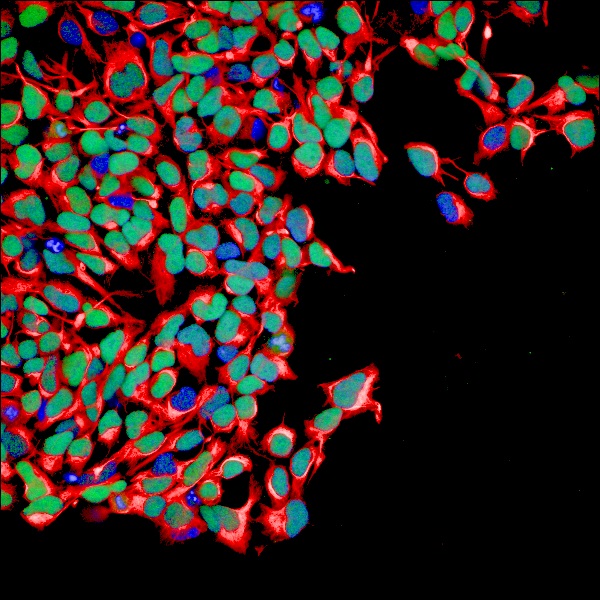Fraunhofer ITMP involved in two new European research consortia on research rare childhood diseases
The European Joint Programme on Rare Diseases (EJP-RD), established within the Horizon 2020 European Research Framework Program, brings together over 130 institutions from 35 countries. It has focused on preclinical research to develop effective therapies for rare diseases and will now fund two new European consortia with participation of Fraunhofer ITMP called CureMILS and TreatKCNQ with a total of over 3.6 million euros. The aim of the research projects is to develop therapies against two rare diseases in children.

Rare disease Project 1: CureMILS. Mitochondrial DNA-associated MILS is a rare genetic neurological disease of children caused by a disorder of mitochondria, the essential energy-generating centers of living cells. Currently, there is no cure or effective treatment for this severe disease, which leads to brain degeneration and a life expectancy of affected children of only a few years. One of the aspects that severely hinders the search for new therapies is the lack of effective test models for MILS which could be used to help identify new drugs able to restore normal mitochondrial function. To develop such models, CureMILS will use cellular reprogramming technology to generate neuronal cells from the patients' own skin cells. These drugs identified using the neuronal cells will be further evaluated using even more accurate disease models including three-dimensional brain organoids (mini-brains) which carry the disease mutations.
The CureMILS consortium is coordinated by Prof. Dr. Alessandro Prigione at the University Hospital Düsseldorf. A key partner will be Dr. Ole Pless at Fraunhofer Institute for Translational Medicine and Pharmacology ITMP in Hamburg. The consortium includes six other partners from across Europe in: University of Innsbruck (Austria), Radboud University Nijmegen (The Netherlands), University of Helsinki (Finland), Institute of Genetics and Animal Biotechnology Jastrzebiec (Poland), University of Verona (Italy) and University of Luxembourg (Luxembourg). The consortium project is being conducted in collaboration with International Mito Patients (IMP), a network of national organizations on mitochondrial diseases. Other participants include collaborators from Germany, the Netherlands and Italy, Oroboros Instruments GmbH and the German Mitochondrial Diseases Network (mitoNET).
Rare disease Project 2: TreatKCNQ. The so-called KCNQ-associated encephalopathies (KCNQ-E) are a group of severe epilepsies with onset in the first months of life, characterized by treatment-resistant seizures and developmental delays. They are caused by mutations in ion channels which play critical roles in regulating neuron function in the brain. Both increased and reduced channel activity can lead to the development of KCNQ-E. Seizures in children with KCNQ-E often respond poorly to antiepileptic drugs and, more importantly, therapies for the developmental problems are not available. With the goal of developing improved therapies for KCNQ-E, the TreatKCNQ consortium was established by researchers with expertise in KCNQ-related pathology and drug development. One goal will be the development and testing of safer and more potent analogs of retigabine, a drug that targets KCNQ channels but was recently withdrawn from the market due to side effects. The consortium expects to provide preclinical evidence for several types of targeted treatments that have the potential to improve the developmental course of KCNQ-E.
The TreatKCNQ consortium is coordinated by Prof. Dr. Sarah Weckhuysen at the University of Antwerp. Central German partners will be Dr. Philip Gribbon at Fraunhofer Institute for Translational Medicine and Pharmacology ITMP in Hamburg and Dr. Thomas Wuttke at the Hertie Institute for Clinical Brain Research in Tübingen. The consortium will also include other partners from France (University of Aix-Marseille) and Italy (University of Naples Federico II). The consortium project will be conducted in collaboration with the Italian patient organization Dravet Italia Onlus.
 Fraunhofer Institute for Translational Medicine and Pharmacology ITMP
Fraunhofer Institute for Translational Medicine and Pharmacology ITMP